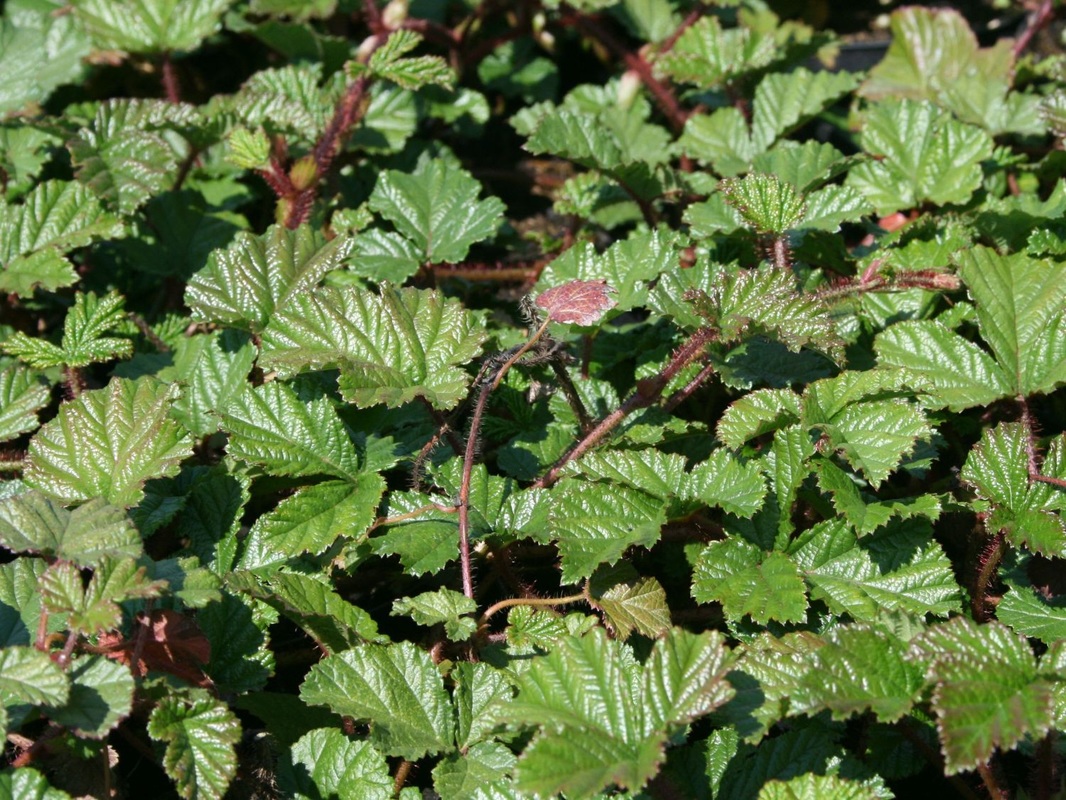This document was created by Claire White, before we started the EW. You can see what we hoped to plant. Soon, we will update the document with what we actually have growing.
Ground cover plants
Groundcovers are species that have a horizontal growth and branching pattern. They form a “living mulch” over the soil surface. They can be shade or sun tolerant, and either understory or edge species. Because they are the soil’s first line of defense against the drying effects of sun and wind, establishing a groundcover is the first step in the reforestation or afforestation of a site.
In the edible woodland, we are only just starting to put in ground cover plants - the rest are green manures, that will gradually decrease as the ground cover increases. One of the first plants, and doing very well, are the wild strawberries. They have formed a mat, and are doing well at keeping our weeds.
In the edible woodland, we are only just starting to put in ground cover plants - the rest are green manures, that will gradually decrease as the ground cover increases. One of the first plants, and doing very well, are the wild strawberries. They have formed a mat, and are doing well at keeping our weeds.
Green manure
Winter green manures
Although usually not as striking as their summer equivalents, the overwintering green manures are invaluable for protecting and enriching the soil during the harsher months. Hungarian grazing rye Sow August-September. Like a large, rough grass, this is the one for fast-growing, overwintering coverage, producing lots of green to be dug in in spring. Crimson clover Sow between April and August. A nitrogen fixer that grows taller than white clover, with elegant crimson flowers through the summer. Alfalfa Sow between May and July. Not the prettiest, but it makes up for it in hard work through the winter, drawing up minerals and nutrients from the subsoil – essential elements for healthy plant growth – while fixing nitrogen. Red clover Sow between April and August, adding nitrogen to the soil and attracting beneficial insects. Can last for two years or so, making it ideal should you need longer-lasting coverage. Field beans Sow between September and November. An excellent, fast-growing winter cover that also adds nitrogen to the soil. Summer green manures Many of the summer green manures flower beautifully, contributing huge ecological value wherever they’re grown. Phacelia Sow between March to September. The flowers draw in beneficial insects. May last all winter in the south of the country. Buckwheat Sow between April and August. A deep-rooting green manure that grows happily on poor ground, improving it as it grows. A fine insect attractor, too. White clover Sow between April and August. A low-growing nitrogen fixer with white flowers that attract insects. Yellow trefoil Sow between April and August. A low-growing nitrogen fixer with yellow flowers, perfect as an insect-attracting ground cover between tall plants – I undersow peas and beans with it to keep moisture in and weeds out. |
Edge Planting
Edge plants are transitional zone plants that go between the food forest and non-forest areas and/or different food forest areas. Carefully chosen, they can protect the food forest proper from wind and other weather that could negatively impact it.
A solid edge planting helps increase/preserve humidity within a food forest and can also be used, for example, to create a south-facing horseshoe shaped “sun trap” that will create different microclimates within a food forest, homesite, or settlement. Species diversity tends to be greatest in edges, and forests can be managed to maintain and increase the “edge effect.” In the edible woodland at present, we are only jsut starting out with these plants. The council mows up to the edge, so we are quite lucky. |

